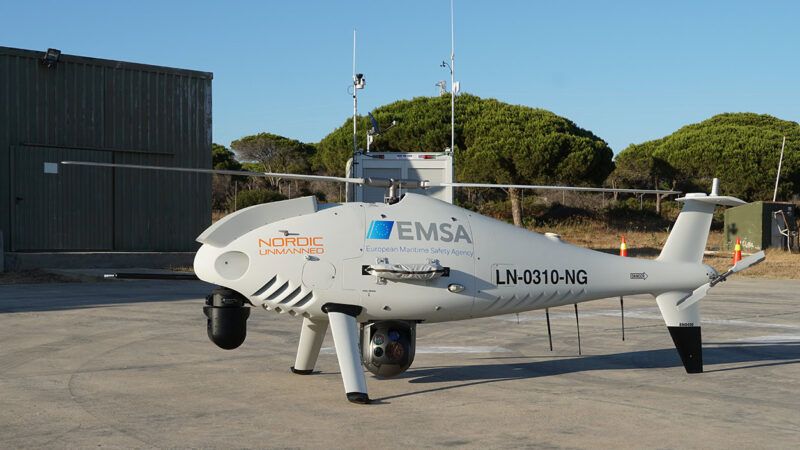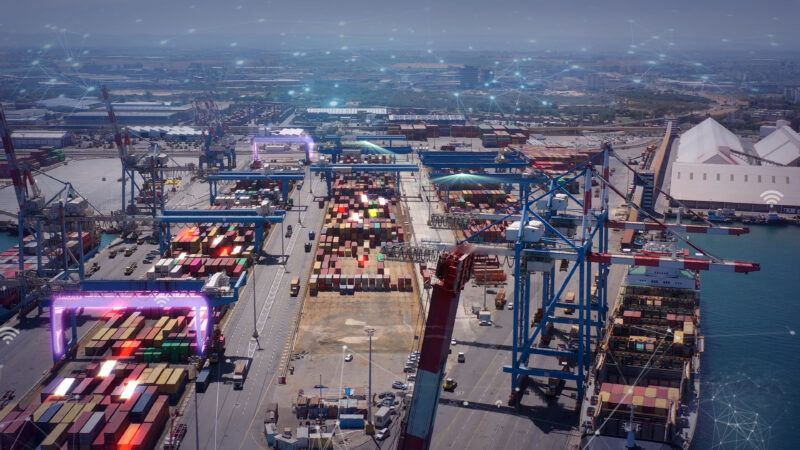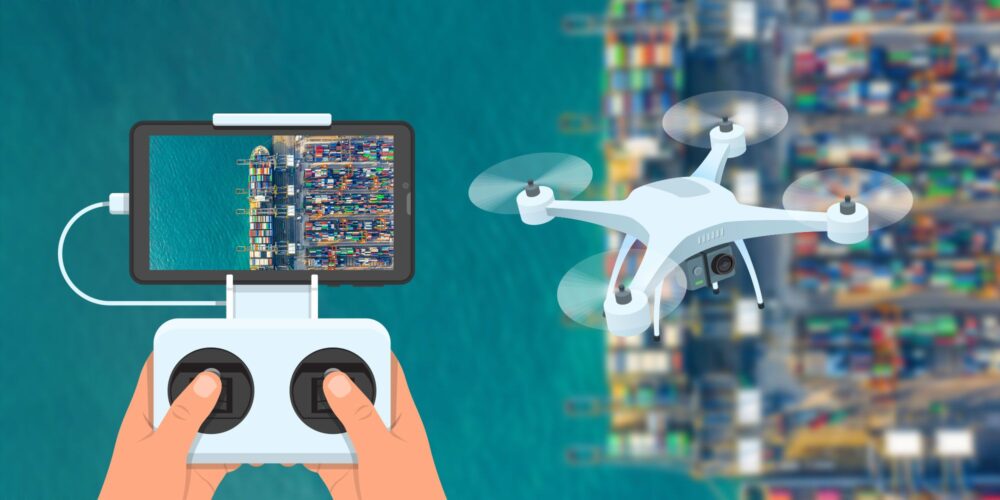 Drones improve the safety, speed and effectiveness of port operations and the ability to respond to eventualities. (PierNext)
Drones improve the safety, speed and effectiveness of port operations and the ability to respond to eventualities. (PierNext)
Drones and ports: what will be the next innovation?
How can a drone be useful in port operations? Its application is currently limited to the testing of several pilots to verify its utility in different scenarios and operations. Conclusions show that they improve security, speed, effectiveness and capacity of response and that they are an indispensable tool for the development of the smart port.
 Drones improve the safety, speed and effectiveness of port operations and the ability to respond to eventualities. (PierNext)
Drones improve the safety, speed and effectiveness of port operations and the ability to respond to eventualities. (PierNext)
To see drones achieve their full capacity in port facilities, it is necessary to overcome some obstacles, basically legal. The latest European initiatives indicate that change is just around the corner and that, sooner rather than later, drones will be an indispensable tool for ports and other essential infrastructures.
How ports benefit of the use of drones
The benefits of flying a drone or unmanned aerial vehicle are transversal for a port institution. The department of Infraestructures is a pioneer within the Port of Barcelona, as it has already launched drones to obtain topographic information by incorporating technologies such as photogrammetry and LIDAR, a remote laser technique that maps a 3D environment using precise georeferencing. This exceeds, by far, the surface pointes obtained until recently by surveyors, whose work is limited to areas accessible by foot in order to take safe measurements.
On the other hand, a drone permits to obtain a cloud of millions of points of the ground located centimeters away. These contain essential information to carry out works, such as the topographic characteristics of the area. An editable digital surface is generated when joining all the points, which allows to work and visualize the result of future projects.
“Through these techniques we also obtain an orthophoto, an aerial photograph of the terrain free of errors and deformations that behaves the same way as a blueprint. This is a true engineering revolution due to the fact that its cost, speed, security and the quality of information is something we have never seen before in the sector,” explains Miguel Ángel Pindado, Director of Projects and External Connectivity Infrastructures of the Port of Barcelona.
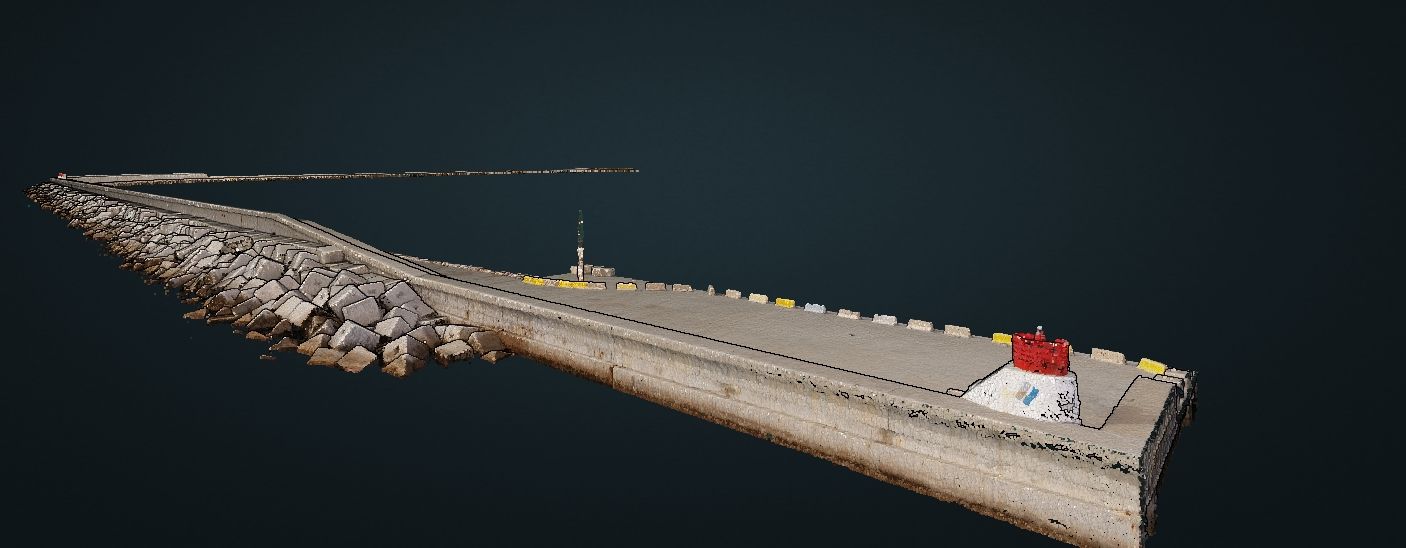
Another port that has already started testing drones is Hamburg, as explained by some of its representatives in the latest edition of Smart Ports-Piers of the Future. The German port authority has carried out several programs and pilots to incorporate drones into its operations.
Christian Bahr, Senior Project Manager - IT Innovation and Strategy, revealed that they began to incorporate a drone control station more than two years ago, with the support of the German Federal Ministry of Transport and Digital Infrastructure. The objective is to serve two critical departments: the disaster prevention and infrastructure units, since both would benefit from obtaining information in real time to prevent and detect risk situations from the air.
The project is called PORTwings and it also includes the development of software that will allow to control and plan flights and collect data automatically, under the remote supervision of an operator. Among the options available in the market, the priority of the German port is to own models that can incorporate the largest number of sensor units and mounts to measure different variables in a single flight.
But there are more experiences with drones amongst the main ports of the world. This year, for example, the Port of Antwerp will also monitor and inspect its 120 km² of facilities with a pilot program involving a drone. In this case, they are testing a vehicle that operates completely independently and can be charged automatically thanks to a centralized intelligent base station managed from a web platform.
The next innovation will not involve the drone itself but the services and exploitation derived from the flights, such as the management and processing of the data obtained
Drones by air... and by sea
Drones are not limited to collecting data from the air, but several ports are already testing aquatic and underwater models to obtain indicators on the quality of the waters, in addition to carrying out inspections or maritime surveillance.
In April 2020, Hamburg started a test with Echo.1, an aquatic drone capable of navigating the surface of the water autonomously for six hours and without emissions with the objective to measure water depth, especially in inaccessible areas.
In the first phase, the drone navigated through port areas with little maritime traffic. In the next one, it will be tested in more crowded areas. "Although the automatic collision avoidance system needs to be improved, we are planning to increase the number of sensors to expand its capacity beyond the hydrographic services of the port," explained Thomas Thies, Deputy Hydrographer of the Port of Hamburg, in the last edition of Smart Ports.
In turn, the Port of Barcelona carried out a demonstration this March with an aquatic drone from the company GPASEABOTS. This drone is a multipurpose platform that, depending on the instrumentation placed, can perform various automated and visualized tasks in real time, speeding up the response capacity in any eventuality.
Jordi Vila, Head of Environment at the Port of Barcelona, pointed out that “it is a first step to advance towards the automation of field work,” allowing “to deepen the knowledge of the marine environment in a way that is very different from the current one.”
New regulation, imminent takeoff
This year can represent a breaking point in the implementation of drones in port environments. The new European regulation, in force since December 31, 2020, unifies the legislation of member states, which were locally applied until the new norm was approved. "This initiative indicates a change of mindset as, until now, obtaining permits to fly drones was very complicated," says Pindado.
For ports located in no-fly zones due to their proximity to an airport, such as Hamburg and Barcelona, these vehicles are only allowed to fly in exceptional situations. In the case of the Catalan capital, for example, drones have been used to analyze the damage that storm Gloria caused in 2020 to levees and structural elements. In this case, the drone flight was managed by the Mossos d'Esquadra, the Catalan regional police.
Currently, the Port of Barcelona is processing the necessary permits with the relevant authorities to fly drones in its facilities. It also plans to have a drone center managed by the institution itself.
Xavier Valls, Head of the department of Port Blueprints of the Information Systems area of the Port of Barcelona, is in charge of managing the flights, equipment and technologies incorporated in these devices. He believes that, once the legal bases are established, the use of these vehicles to collect and analyze data on pollution, safety, zoning or conservation will be transversal throughout the organization.
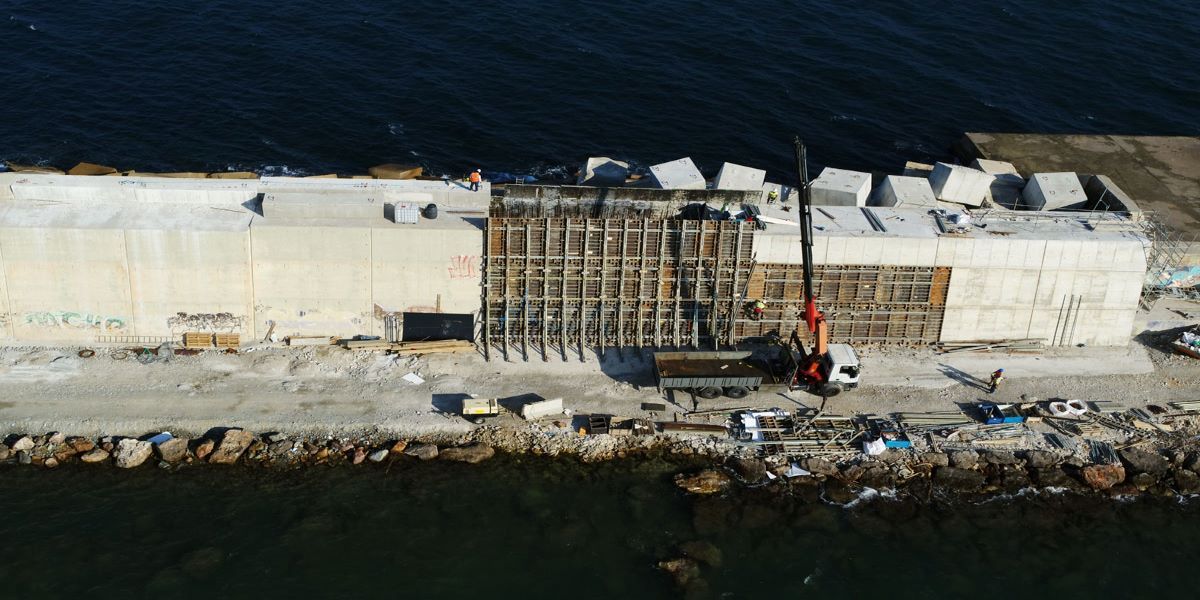
Valls points out that, currently, drones have a series of handicaps, starting with their light weight because it sometimes makes it difficult to incorporate photographic and LIDAR equipment, in the case of the Infrastructures department. "Market solutions point to those devices and sensors that adapt to the drone without destabilizing it," he says.
Another area that needs improvement is battery life, of around 20 minutes on high-end drones. This means that maximum efficiency must be applied to each flight, incorporating sensors capable of measuring the maximum number of possible variables. Although, if the load is greater, so is the battery consumption.
Valls defines the drone as a fundamental tool of the digital twins and ensures that the next innovation will not involve the drone itself but the services and exploitation derived from the flights, such as the management and processing of the data obtained.
Miguel Ángel Pindado identifies the most relevant element in the technological development necessary for the intensive use of the aerial drone in all port operations: “Those companies capable of developing the most accurate, lightweight sensors able to collect more data will be the ones that revolutionize a market that is currently in constant evolution.”




